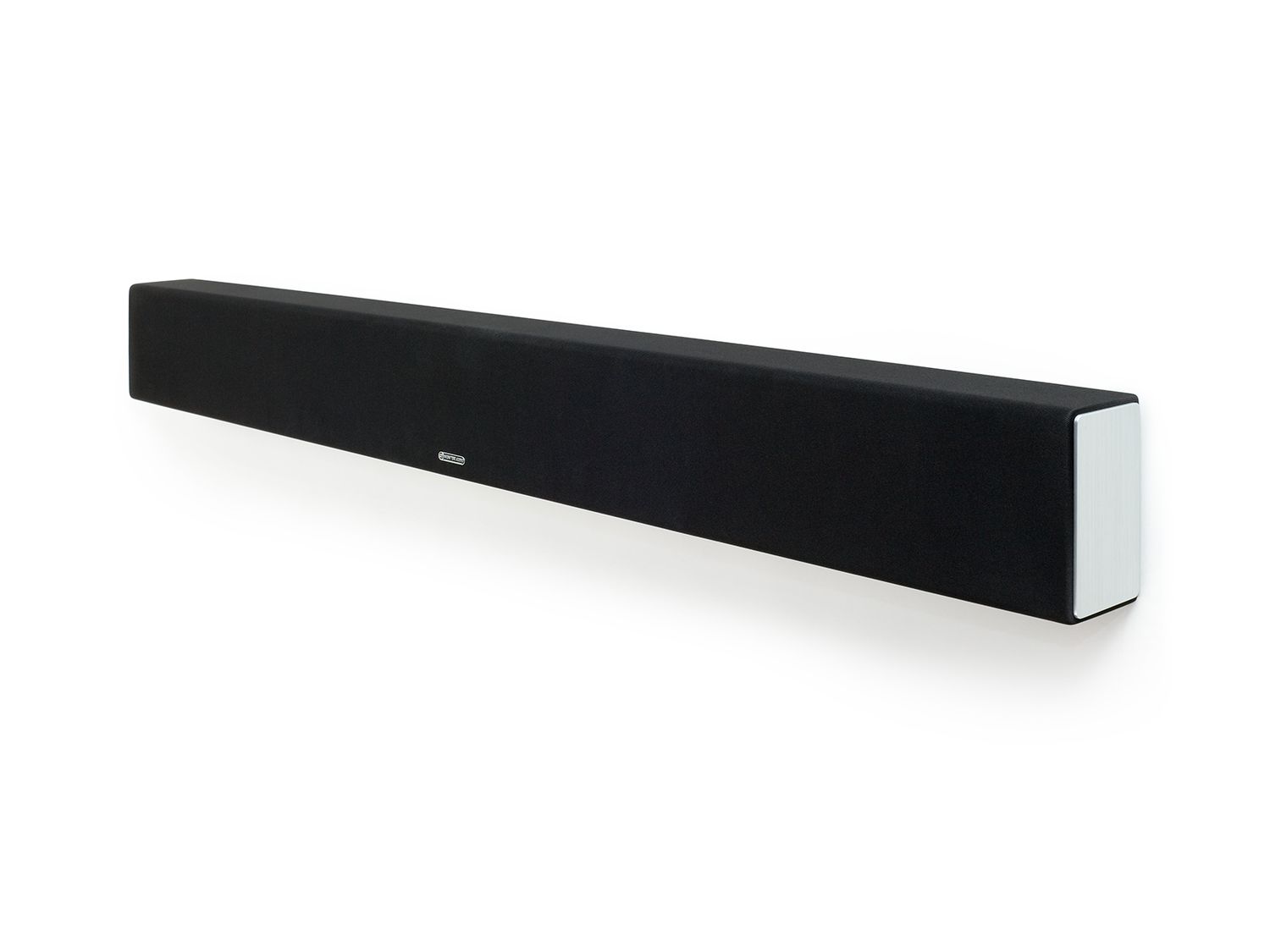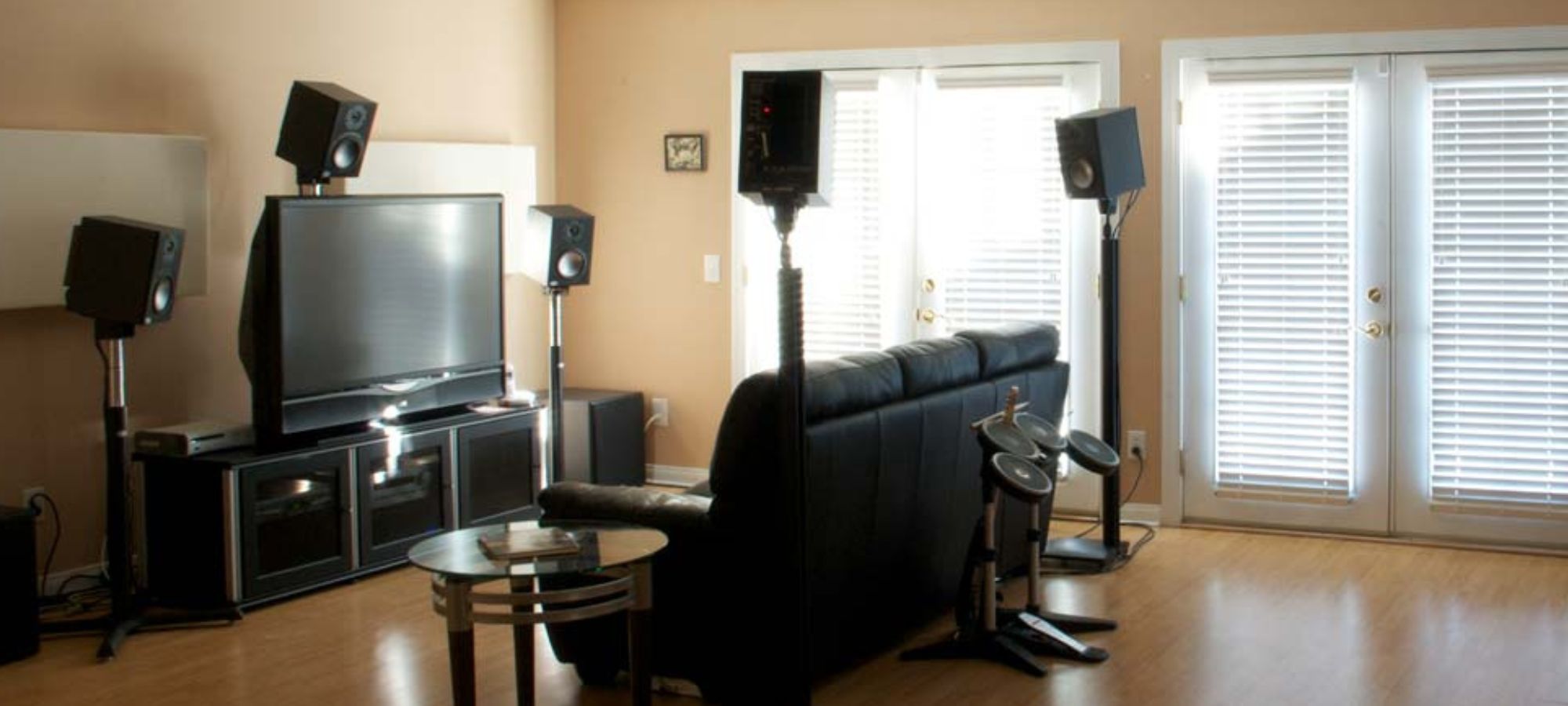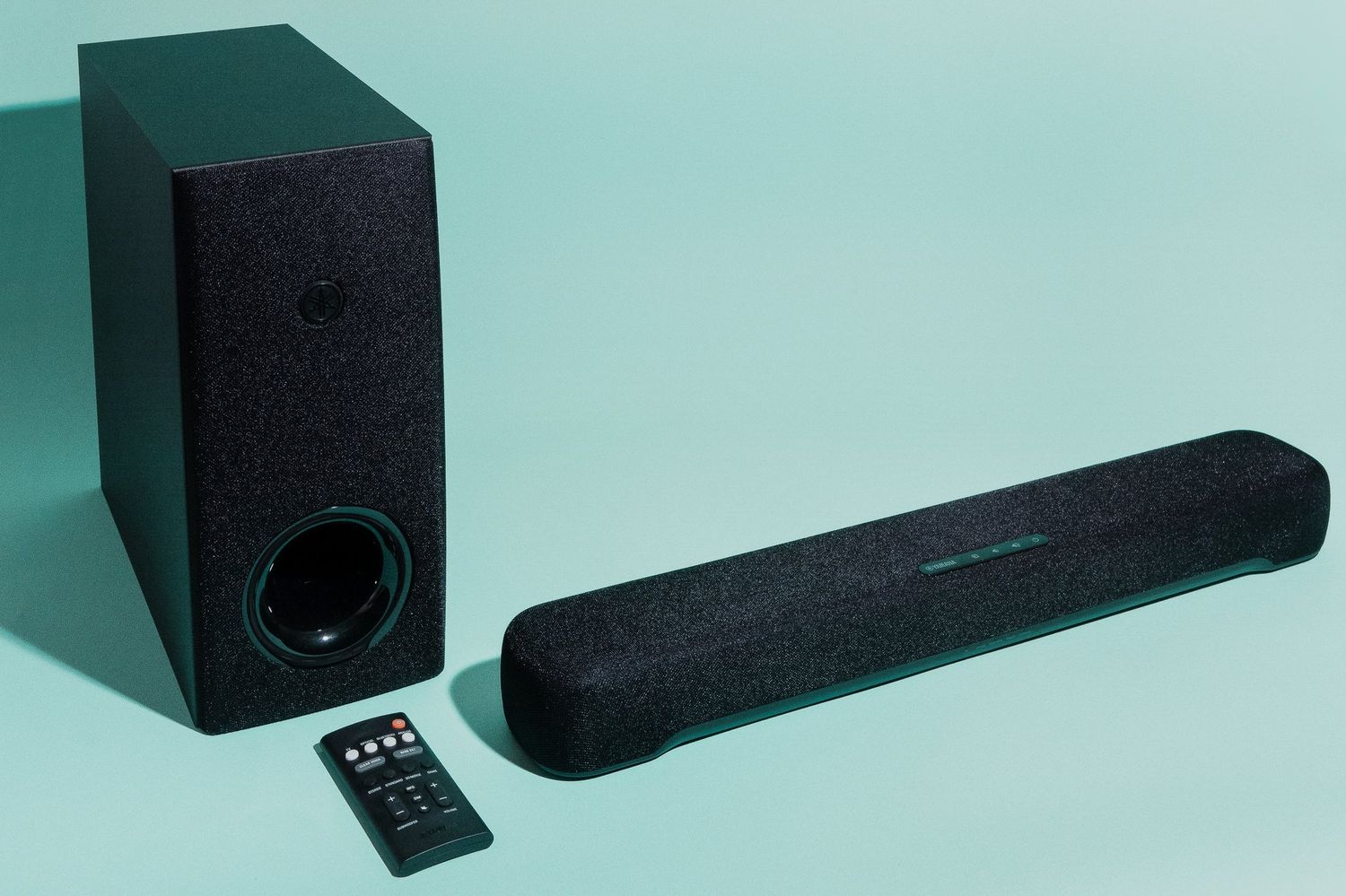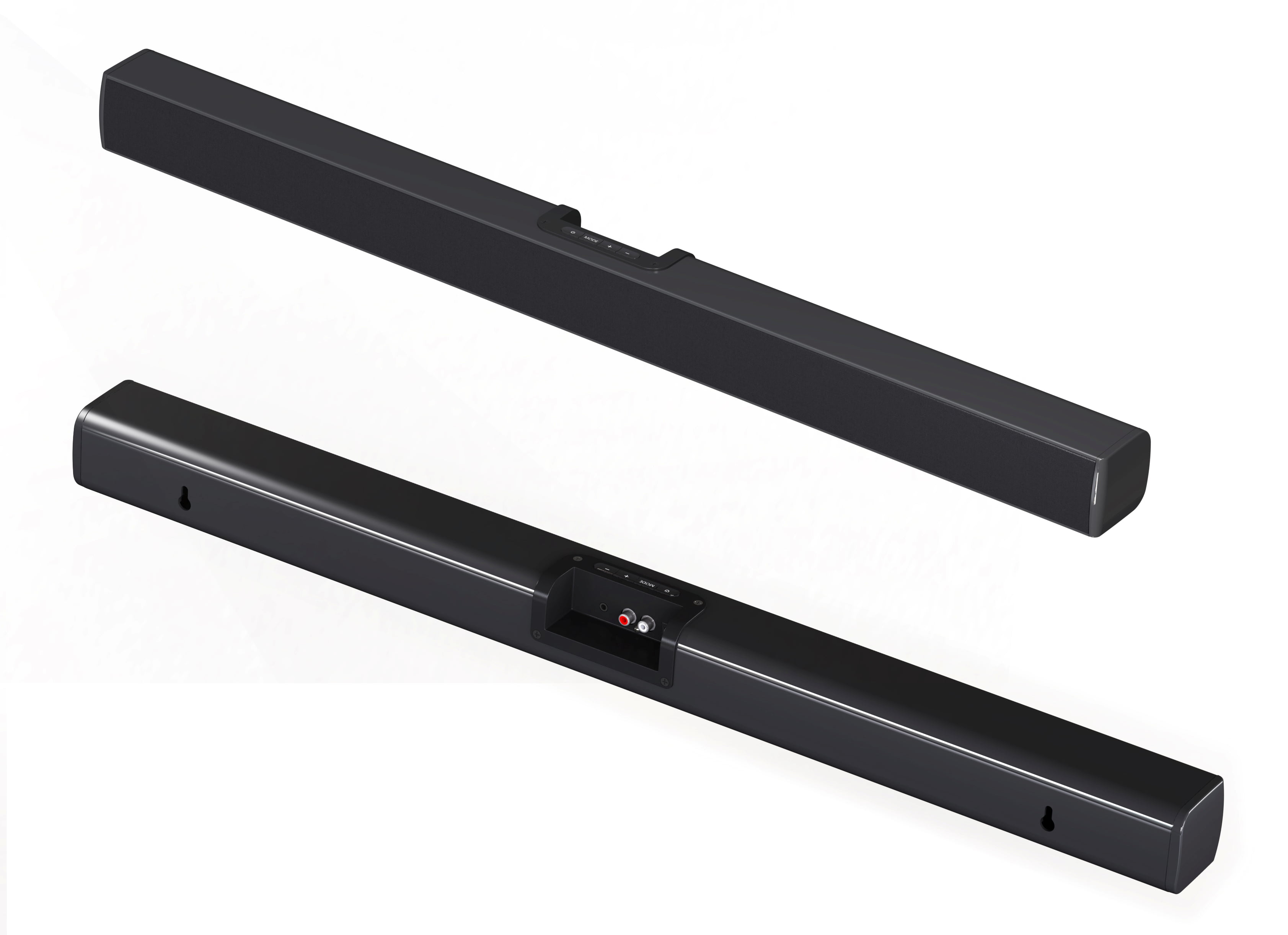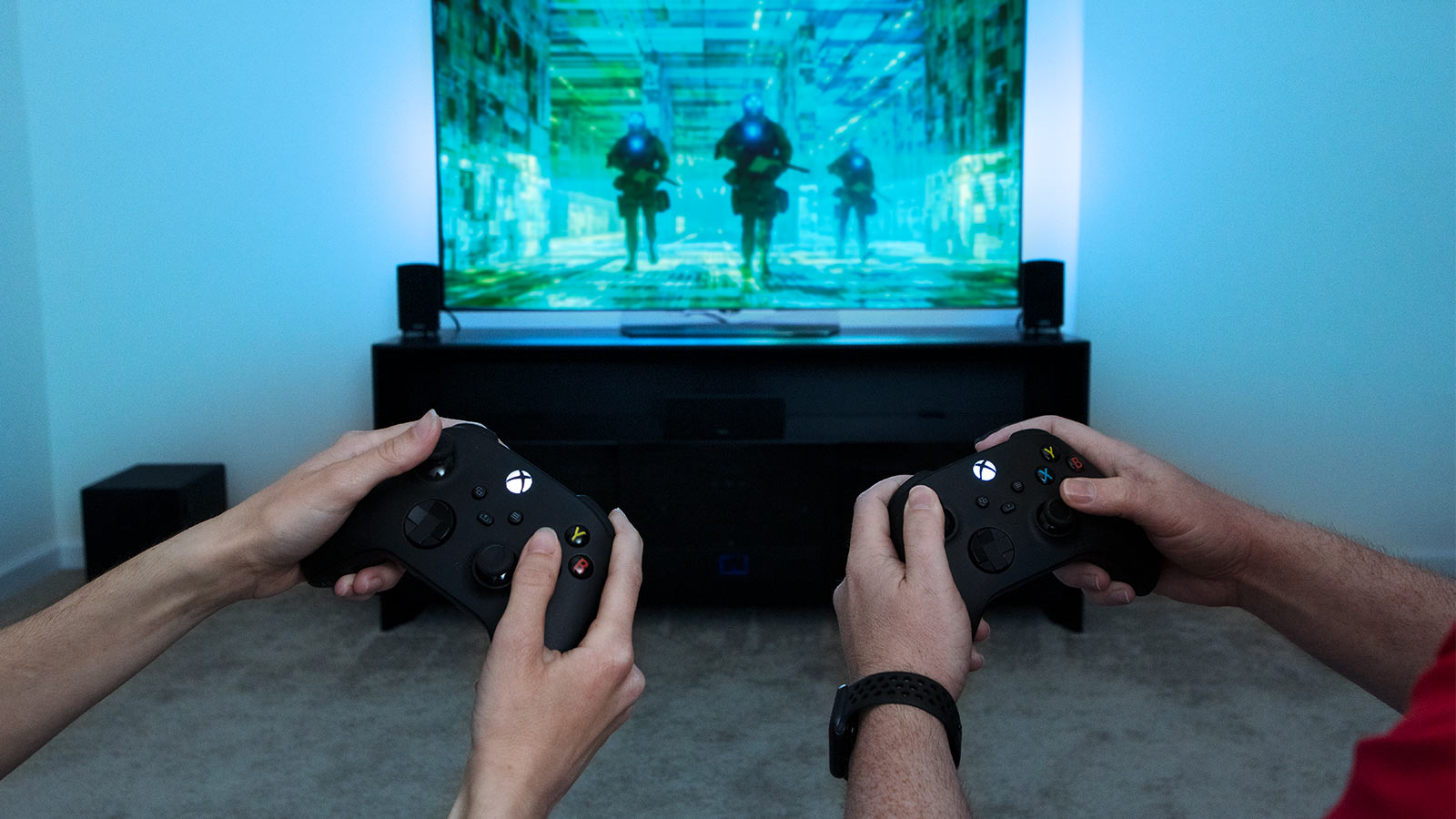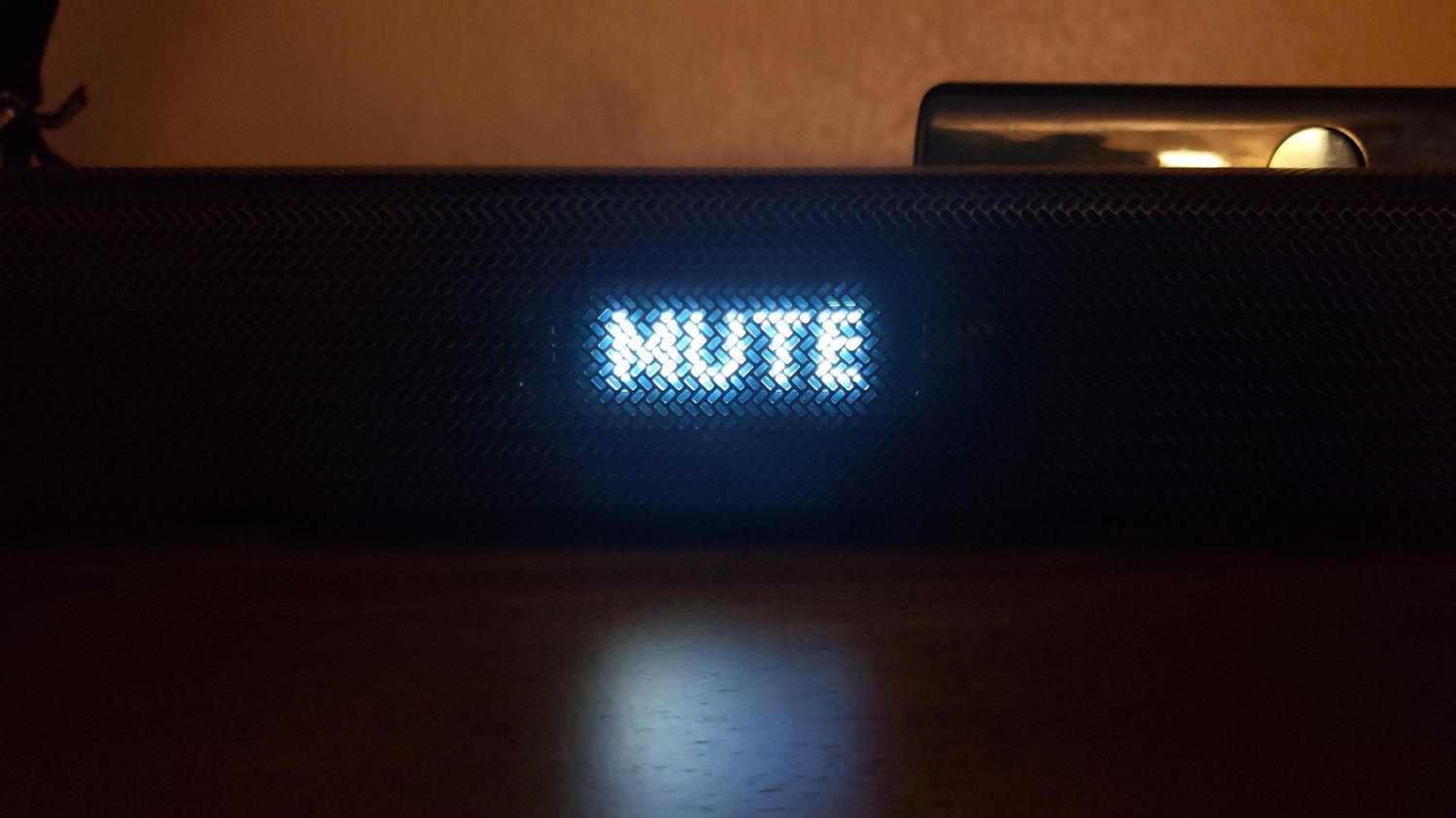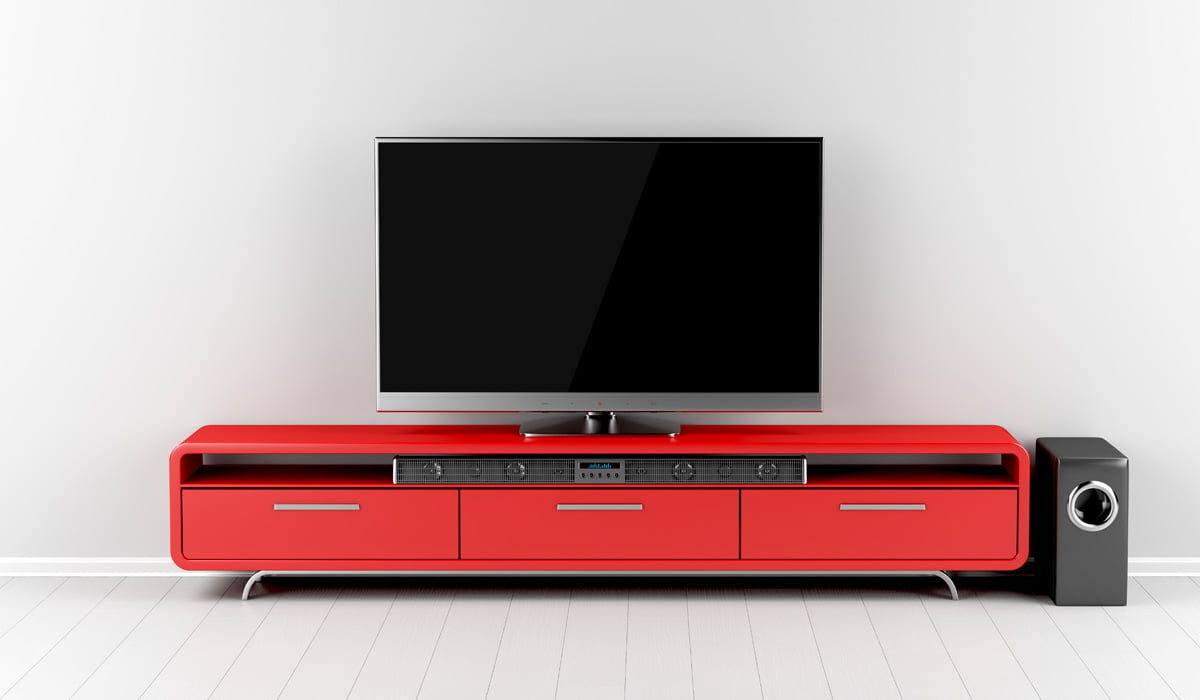Home>Production & Technology>Sound Bar>Why Sound Bar Not Working
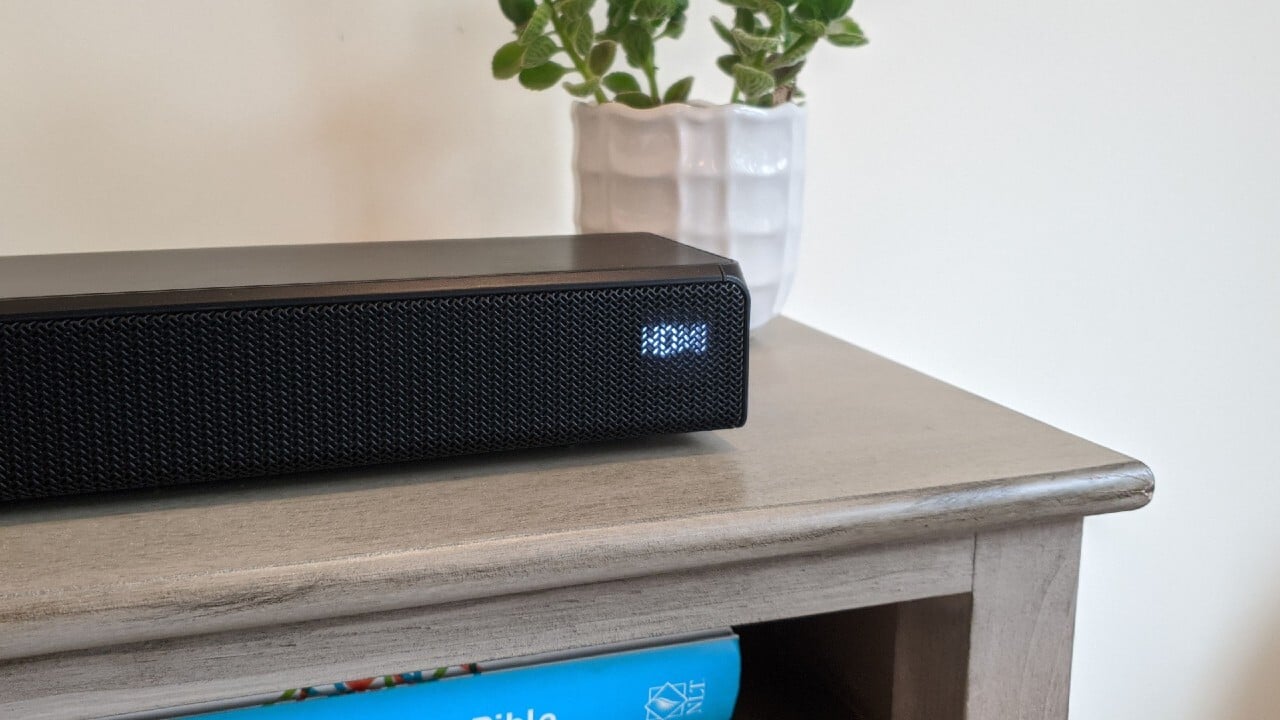

Sound Bar
Why Sound Bar Not Working
Published: December 27, 2023
Experiencing issues with your sound bar? Find out why your sound bar is not working and learn how to troubleshoot the problem.
(Many of the links in this article redirect to a specific reviewed product. Your purchase of these products through affiliate links helps to generate commission for AudioLover.com, at no extra cost. Learn more)
Table of Contents
Introduction
Sound bars have become a popular addition to home entertainment systems, offering a sleek and convenient way to enhance your audio experience. By providing clear and immersive sound, sound bars can elevate your movie nights, gaming sessions, and music listening activities.
However, like any electronic device, sound bars can encounter certain issues that may prevent them from working properly. This can be frustrating, especially when you’re looking forward to enjoying your favorite movies or music. But before you reach for the phone to call customer support, it’s worth exploring some common issues and troubleshooting steps that may help you resolve the problem on your own.
In this article, we will delve into the common issues that can arise with sound bars and guide you through troubleshooting steps to get your sound bar up and running again. Whether you’re facing a complete lack of sound, distorted audio, or connectivity issues, we’ve got you covered.
So, let’s dive in and explore how to troubleshoot your sound bar and bring your audio experience back to life!
Common Issues with Sound Bars
Sound bars, like any other electronic device, can encounter a range of issues that may affect their performance. Understanding these common issues can help you diagnose the problem and find a suitable solution. Here are some of the most frequent problems that sound bar users may experience:
- No sound: One of the most frustrating issues is when you can’t hear any sound coming from your sound bar. This can be caused by various factors, such as incorrect settings, faulty cables, or compatibility issues.
- Distorted audio: If you’re hearing distorted or garbled sound from your sound bar, it could be an indication of improper audio settings, damaged speakers, or interference from nearby electronic devices.
- Connectivity problems: Sound bars rely on connections to function properly. If you’re experiencing difficulty connecting your sound bar to your TV, smartphone, or other devices, it could be due to compatibility issues, incorrect settings, or faulty cables.
- Delayed audio: A common issue with sound bars is audio that is out of sync with the video. This can be a frustrating experience, particularly when watching movies or playing games. The delay can be caused by various factors, such as settings, signal transmission issues, or incompatible devices.
- Remote control problems: Sound bars typically come with a remote control for easy operation. If you’re having trouble controlling your sound bar using the remote, it could be due to a weak battery, a faulty remote, or issues with the sound bar’s infrared receiver.
While these are some of the common issues that users may encounter, it’s important to remember that each sound bar model may have its own unique problems. Additionally, some issues may require professional assistance or warranty repairs. However, before reaching out for help, let’s explore some troubleshooting steps that you can try on your own to resolve these issues.
Troubleshooting Steps
When faced with issues with your sound bar, it’s worth going through a series of troubleshooting steps to identify and resolve the problem. By following these steps, you may be able to fix the issue without needing to contact customer support or seek professional assistance. Let’s walk through some common troubleshooting steps:
- Check the power connection: Ensure that your sound bar is properly plugged into a power source and that the power cable is securely connected. If the sound bar is powered by a separate power adapter, make sure it is also properly connected. Additionally, check if the power outlet is functioning by plugging in another device.
- Adjust the volume settings: Sometimes, the sound bar’s volume may be set to the lowest or muted. Use the sound bar’s remote control or the buttons on the unit to increase the volume to an audible level. Also, check if the volume on your TV or connected device is set to a reasonable level.
- Verify the audio input source: Ensure that the audio input source is correctly selected on the sound bar. For example, if you’re using an optical cable, make sure the sound bar is set to receive audio from the optical input. If you’re using HDMI, ensure the correct HDMI input is selected.
- Check the audio cables: Examine the audio cables connecting your sound bar to the TV or other devices. Make sure they are securely plugged in and not damaged. Try using a different set of cables or swapping ports to determine if the issue lies with the cables.
- Reset the sound bar: In some cases, performing a factory reset on your sound bar can resolve certain issues. Refer to the user manual for instructions on how to reset your specific model. Keep in mind that a reset will erase any customized settings, so you may need to set them up again.
- Update or reinstall sound bar drivers: If you’re using your sound bar with a computer, check if there are any available driver updates for your sound bar. Visit the manufacturer’s website and download the latest drivers, or reinstall the existing ones to ensure proper compatibility and functionality.
- Contact customer support: If you’ve exhausted all troubleshooting options and the issue persists, it may be time to reach out to the customer support of your sound bar’s manufacturer. They can provide further assistance or advise on repair or replacement options if your sound bar is still under warranty.
Remember to refer to your sound bar’s user manual for detailed instructions on troubleshooting specific problems or additional troubleshooting steps.
By following these troubleshooting steps, you can often diagnose and resolve common issues with your sound bar. However, if the problem persists or appears to be a hardware issue, it’s best to contact customer support or seek professional assistance for further guidance.
Check the Power Connection
One of the most basic and common issues with sound bars is a faulty power connection. If your sound bar is not receiving power, it won’t function properly or produce any sound. Here are the steps you can take to check and ensure a proper power connection:
- Verify the power source: Check if your sound bar is properly plugged into a power outlet. Ensure that the power cable is securely connected to both the sound bar and the outlet. Sometimes, the cable may become loose or dislodged, which can disrupt the power supply.
- Test the power outlet: Plug another device into the same power outlet to confirm if it is working. Sometimes, a faulty outlet might be the cause of the power issue. If the second device doesn’t work either, consider trying a different power outlet or contacting an electrician to fix the problem.
- Check the power cable: Inspect the power cable for any visible damage like cuts, fraying, or exposed wires. Even a small break in the cable can prevent the sound bar from getting an adequate power supply. If you notice any damage, consider replacing the power cable with a new one of the same specifications.
- Ensure the power adapter is functioning: Some sound bars use a separate power adapter, which can be prone to issues. Check if the power adapter’s LED indicator is lit, indicating that it is receiving power. If the LED is not on or blinking, it could be a sign of a faulty power adapter. In such cases, contact the manufacturer for a replacement adapter.
- Try a different power outlet: If you’re still experiencing power issues, try plugging your sound bar into a different power outlet. This can help determine if the problem is specific to the outlet or the sound bar itself. Sometimes, a power surge or electrical issues in a particular outlet can disrupt the power supply to the sound bar.
By checking the power connection and addressing any issues with the power source, power cable, or power adapter, you can ensure that your sound bar receives a consistent and reliable power supply. If the power issues persist even after following these steps, it may be necessary to contact customer support or seek professional assistance for further diagnosis and resolution.
Adjust the Volume Settings
One common issue that users may encounter with their sound bars is low or no sound coming from the device. This can be frustrating, especially when you’re looking forward to immersing yourself in a movie or enjoying your favorite music. Before assuming that there is a technical problem, it’s important to check and adjust the volume settings. Here are some steps you can take to ensure that the volume levels are properly adjusted:
- Check the sound bar’s volume control: Use the volume controls on your sound bar’s remote control or on the sound bar itself to increase the volume. Make sure the volume is not set too low or muted. Sometimes, accidental button presses or misconfigured settings can result in low or no sound.
- Adjust the volume on your TV or connected device: If your sound bar is connected to a TV, ensure that the TV’s volume is set to an appropriate level. Some TVs have separate audio settings for external speakers, so make sure those settings are correctly configured. Similarly, if you’re using a connected device like a gaming console or media player, check its volume settings as well.
- Balance the audio settings: Some sound bars have additional audio settings, such as balance or equalizer settings. If the sound seems uneven or distorted, you can adjust these settings to fine-tune the audio output. Refer to your sound bar’s user manual for instructions on accessing and adjusting these settings.
- Disable any audio enhancements: On your TV or connected device, there may be audio enhancement features enabled that affect the sound output. These features, such as dynamic range compression or virtual surround sound, can sometimes interfere with the sound bar’s performance. Disable or adjust these settings to see if it improves the audio quality.
- Check the audio balance: If you notice that the sound is louder on one side or coming from only one speaker, check the audio balance settings. Most sound bars have an audio balance function that allows you to adjust the left-right audio balance. Ensure that the audio balance is centered or adjusted according to your preference.
By checking and adjusting the volume settings on both your sound bar and connected devices, you can ensure that the audio is at an appropriate level. Sometimes, the solution to low or no sound issues can be as simple as adjusting a few settings. However, if you’ve followed these steps and the problem persists, the issue may require further troubleshooting or technical support.
Verify the Audio Input Source
When experiencing issues with your sound bar, it’s important to verify that the correct audio input source is selected. This ensures that the sound bar is receiving the audio signals from the intended device. Here are some steps to verify and adjust the audio input source:
- Check the input selection on the sound bar: Most sound bars have multiple input options, such as HDMI, optical, or RCA. Make sure that the sound bar is set to the correct input source that corresponds to the device you are using. Use the sound bar’s remote control or buttons on the unit to cycle through the available input options.
- Verify the audio output settings on your connected device: If you’re using a TV or other audio source, ensure that the audio output settings are properly configured. For example, if you’re connecting your sound bar to the TV through HDMI ARC (Audio Return Channel), make sure that the TV’s audio output is set to HDMI ARC. Consult your device’s manual or settings menu for specific instructions on configuring the audio output.
- Check the input and output ports and cables: Inspect the input and output ports on both the sound bar and the connected device. Ensure that the cables are securely plugged in and that there are no loose connections. If you’re using HDMI, try using a different HDMI cable to rule out any cable-related issues. Additionally, check if the input and output ports are clean and free from dust or debris, as these can sometimes interfere with the connection.
- Restart the devices: Sometimes, a simple restart can resolve input source-related issues. Turn off both the sound bar and the connected device, unplug them from the power source, wait for a few seconds, and then plug them back in. Power them on and check if the audio input source is detected correctly.
- Test with a different device or cable: If possible, try connecting a different device to the sound bar using the same input source. This can help determine if the issue lies with the sound bar or the original device. Similarly, try using a different cable to see if the cable itself is causing the problem.
By verifying the audio input source and ensuring that the correct input is selected, you can ensure that the sound bar is receiving the audio signals from the intended device. This troubleshooting step is crucial in diagnosing and resolving issues related to audio input source mismatch or configuration errors. If the issue persists even after following these steps, there may be other factors contributing to the problem, and further troubleshooting or technical support may be necessary.
Check the Audio Cables
An often overlooked but critical component of sound bar setup is the audio cables. If the audio cables are damaged, improperly connected, or incompatible, it can result in issues with sound quality or no sound at all. Here are some steps to check the audio cables and ensure they are properly functioning:
- Inspect the cables: Carefully examine the audio cables connecting your sound bar to the TV or other devices. Look for any visible signs of damage, such as fraying, cuts, or loose connectors. Damaged cables can impact the audio signal and lead to issues with sound quality or no sound.
- Secure the connections: Ensure that the audio cables are securely plugged into the correct ports on both the sound bar and the connected device. Sometimes, cables may become loose over time, resulting in a poor connection and audio disruptions. Gently push and twist the connectors to ensure a snug fit.
- Try different cables: If you suspect the cables are the cause of the issue, try using different cables to see if the problem persists. Use known working cables that are compatible with your sound bar and connected device. This can help determine if the issue lies with the cables themselves.
- Check for compatibility: Ensure that the audio cables you are using are compatible with your sound bar and the connected device. For example, if you are using an optical cable, make sure both the sound bar and the TV have optical audio ports. Using incompatible cables can result in audio signal disruptions or no sound at all.
- Consider cable quality: The quality of the cables can also impact audio performance. In some cases, using higher-quality cables, such as those made with higher-grade materials or shielding, can result in improved audio transmission and reduce the risk of signal interference.
By checking the audio cables and ensuring they are properly connected and functioning, you can eliminate cable-related issues that may be affecting the sound quality or causing a complete lack of sound. However, if the problem persists even after checking the cables, there may be other factors causing the issue, and further troubleshooting or technical support may be necessary.
Reset the Sound Bar
If you’re encountering persistent issues with your sound bar, performing a reset can help to resolve certain problems. Resetting the sound bar essentially restores it to its factory default settings, which can rectify issues caused by misconfigurations or software glitches. Here are the steps to reset your sound bar:
- Refer to the user manual: Consult the user manual specific to your sound bar model. It will provide detailed instructions on how to perform a reset. Different sound bars may have varying reset methods, such as using a combination of buttons on the unit or through the sound bar’s settings menu accessed via the remote control.
- Prepare the sound bar for reset: Before resetting, make sure to disconnect any devices connected to the sound bar and turn off the power. This ensures a clean reset without any external interference.
- Perform the reset: Follow the instructions provided in the user manual to perform the reset. This may involve pressing and holding specific buttons on the sound bar or navigating through the settings menu using the remote control. The reset process may take a few moments, and the sound bar may restart automatically.
- Reconfigure the sound bar: After the reset, the sound bar will revert to its factory default settings. You will need to set it up again, including selecting the appropriate audio input source, adjusting the volume settings, and any other personal preferences. Refer to the user manual for guidance on configuring the sound bar to your desired settings.
Performing a reset can often resolve issues related to misconfigurations, software glitches, or unusual behavior of the sound bar. It is worth noting, however, that a reset will erase any customized settings or configurations you have made. Therefore, it is advisable to have a note or screenshot of your preferred settings before proceeding with the reset.
If the problem persists even after performing a reset, it may indicate a more significant issue that requires further troubleshooting or assistance from customer support or technical professionals.
Update or Reinstall Sound Bar Drivers
If you’re experiencing issues with your sound bar, such as audio distortion or connectivity problems, it may be worth checking for updates or reinstalling the sound bar drivers. Drivers are software components that allow the sound bar to communicate effectively with your devices. Outdated or corrupted drivers can cause various issues. Here are the steps to update or reinstall sound bar drivers:
- Identify the sound bar model and manufacturer: Note down the make and model of your sound bar. This information is usually found on the back or bottom of the sound bar or in the user manual. Additionally, find out the manufacturer name, as you’ll need it to search for driver updates.
- Visit the manufacturer’s website: Go to the official website of the sound bar’s manufacturer. Look for a “Support” or “Downloads” section on the website. Enter the model number of your sound bar to find the appropriate driver updates.
- Download and install the latest drivers: Locate the latest drivers for your sound bar model on the manufacturer’s website. Download the driver files to your computer. Follow the provided instructions to install the drivers. Typically, this involves running the downloaded file and following the on-screen prompts.
- Restart your devices: After installing the updated drivers, restart your computer and sound bar. This allows the changes to take effect and ensures a fresh start with the updated drivers.
- Test the sound bar: Once your devices have restarted, test the sound bar to see if the issues have been resolved. Play audio from different sources to check for any improvements in sound quality or connectivity.
- Reinstall the drivers (if necessary): If updating the drivers doesn’t resolve the issues, you may need to reinstall the sound bar drivers. To do this, go to the “Device Manager” on your computer and find the sound bar under the “Sound, video, and game controllers” section. Right-click on the sound bar and select “Uninstall.” Restart your computer, and the drivers will reinstall automatically upon startup.
Updating or reinstalling the sound bar drivers can often fix issues related to compatibility, audio distortion, or unrecognized device connections. These steps ensure that your sound bar is equipped with the latest software updates, optimizing its performance and addressing any known issues. If the problems persist even after updating or reinstalling the drivers, it may indicate a more complex issue that requires further troubleshooting or professional assistance.
Contact Customer Support
If you’ve exhausted all troubleshooting options and the issues with your sound bar persist, it may be time to reach out to the customer support of the sound bar’s manufacturer. Customer support can provide further assistance and guidance in resolving the problems you’re experiencing. Here’s how to contact customer support:
- Find the customer support information: Locate the customer support contact details for your sound bar’s manufacturer. This information is typically available on the manufacturer’s website, usually under the “Support” or “Contact Us” section. Look for a phone number, email address, or online chat option.
- Prepare the necessary details: Before contacting customer support, gather all the relevant information about your sound bar, including the make, model, and any specific details about the issues you’re facing. Having this information readily available will help customer support assist you more efficiently.
- Reach out to customer support: Use the provided contact information to get in touch with customer support. You can choose the preferred method of communication, such as phone, email, or online chat. Explain the issues you’re encountering in detail and provide the necessary information about your sound bar.
- Follow the instructions and troubleshooting steps: Customer support may provide you with additional troubleshooting steps to try or ask for specific information to diagnose the problem. Follow their instructions carefully and provide any requested details or perform any necessary actions.
- Document your communication: While interacting with customer support, it’s essential to keep a record of your conversations. Take note of the support representative’s name, date and time of the conversation, as well as any instructions or solutions provided. This documentation can be helpful for future reference or in case further assistance is required.
- Consider warranty coverage: If your sound bar is still under warranty, customer support can assist you with warranty-related matters. They may advise on repair options or provide instructions on initiating a warranty claim if necessary.
Contacting customer support allows you to seek expert guidance and assistance in resolving the issues with your sound bar. They have the knowledge and resources to provide you with specific solutions or recommend further steps. Remember to be patient and provide clear and concise details about the problems you’re experiencing to help them assist you more effectively.
If your sound bar is no longer covered by warranty or customer support is unable to resolve the issues, you may need to consult a professional technician or consider replacing the sound bar if repair is not feasible.
Conclusion
Sound bars are a fantastic addition to any home entertainment system, providing enhanced audio quality and an immersive experience. However, like any electronic device, sound bars can encounter issues that may hinder their performance. By following the troubleshooting steps outlined in this article, you can often diagnose and resolve common problems with your sound bar.
We explored common issues, such as no sound, distorted audio, connectivity problems, delayed audio, and remote control issues. Additionally, we provided troubleshooting steps to check the power connection, adjust the volume settings, verify the audio input source, check the audio cables, reset the sound bar, update or reinstall sound bar drivers, and contact customer support when necessary.
Remember to refer to your sound bar’s user manual for specific instructions tailored to your model. It’s important to approach troubleshooting with patience and attention to detail, taking into account any unique specifications or features of your sound bar.
If the troubleshooting steps don’t address the issues or if the sound bar is no longer under warranty, it may be necessary to seek professional assistance or consider a replacement. However, in many cases, following the troubleshooting steps can help you resolve the problems and restore your sound bar to its optimal functioning.
Enjoy your immersive audio experience with a fully functional sound bar, and let the mesmerizing sound transport you into the heart of your favorite movies, games, and music!

